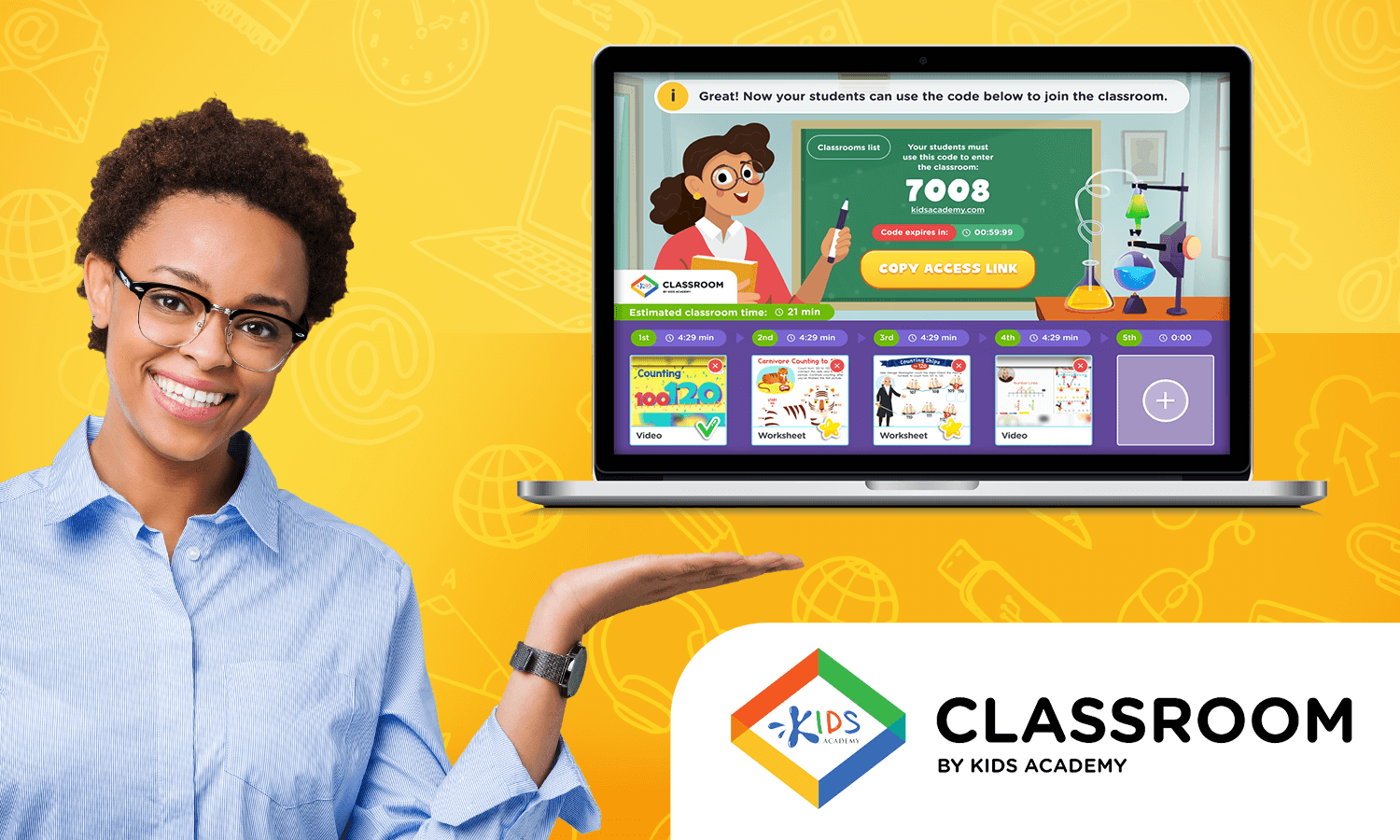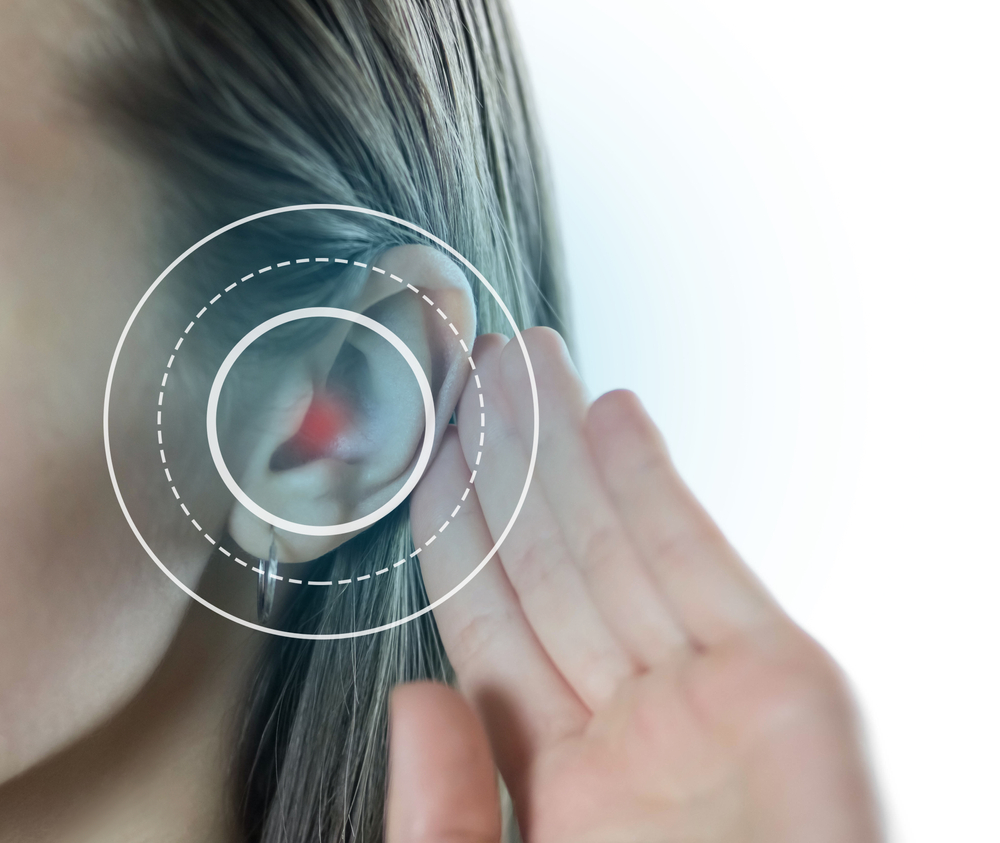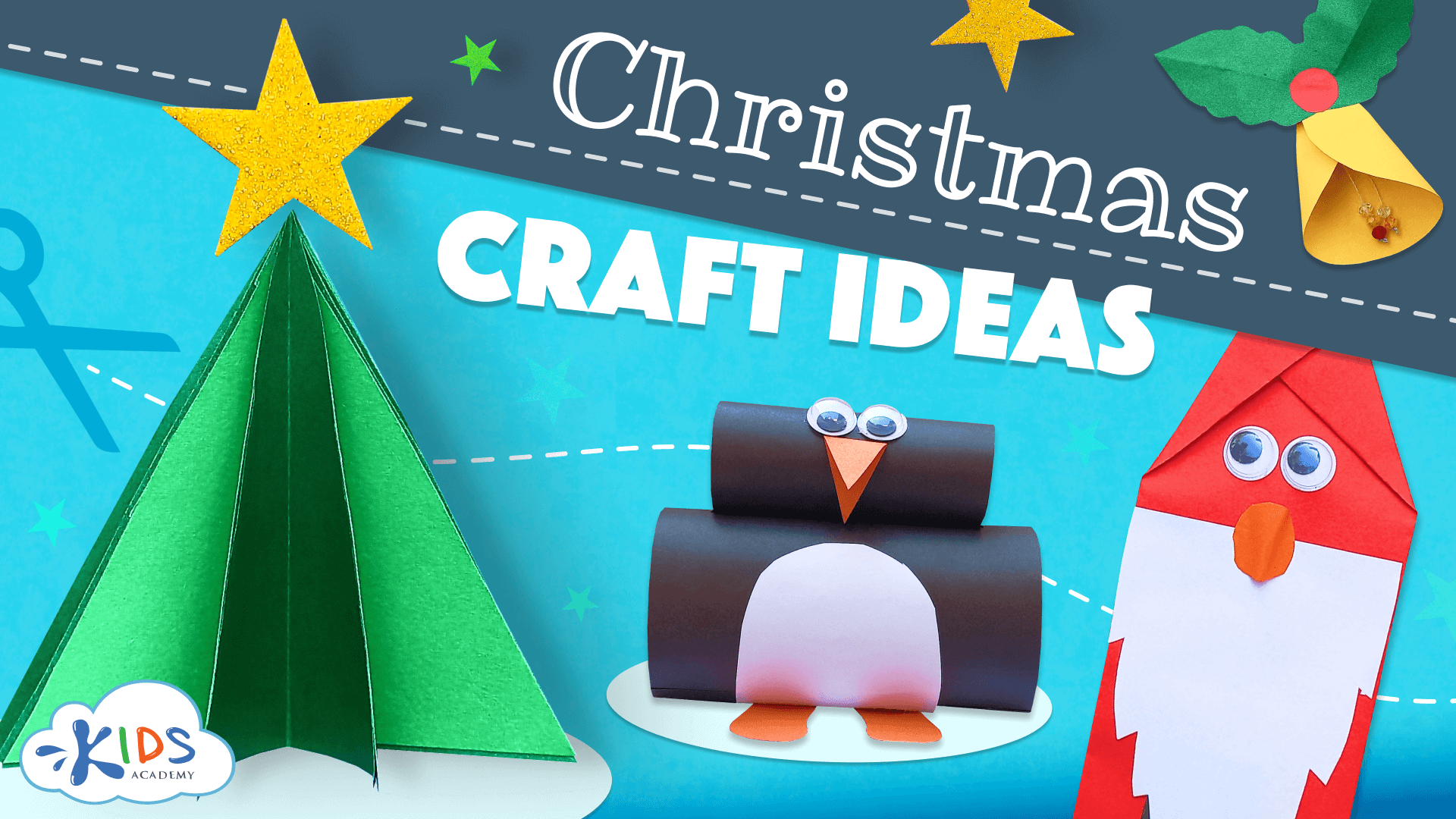Basic geometry understanding Normal Worksheets for Ages 5-6
3 filtered results
-
From - To
Discover our "Basic Geometry Understanding Normal Worksheets" designed for children ages 5-6 to ignite their interest in shapes and spatial awareness. These engaging, printable worksheets introduce young learners to fundamental geometric concepts, including identifying, comparing, and sorting various shapes. By exploring captivating activities tailored to enhance critical thinking, children will develop essential skills in a fun, interactive way. Perfect for classroom use or at-home learning, our resources promote confidence in early math comprehension. Foster your child's love for geometry today and watch them flourish as they embark on their educational journey with our delightful worksheets!
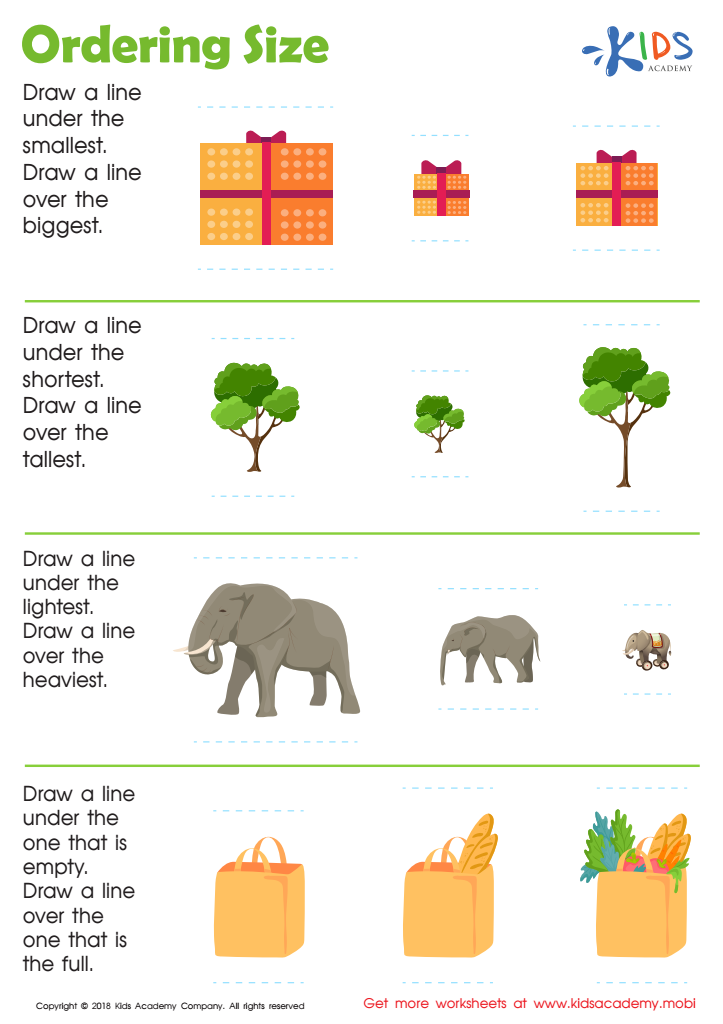

Ordering Size Worksheet
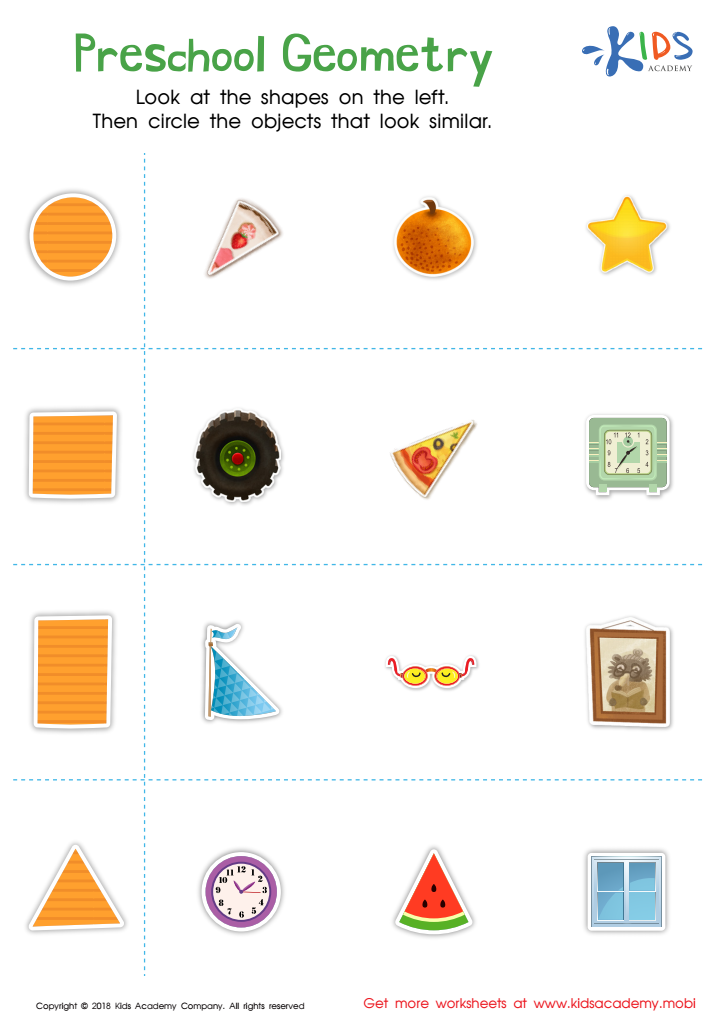

Preschool Geometry Worksheet
Understanding basic geometry is crucial for children aged 5-6, as it lays the foundation for their mathematical development and cognitive growth. At this age, children learn to recognize shapes, understand spatial relationships, and grasp the concepts of size, position, and dimension, all of which are fundamental to everyday problem-solving.
Early geometry education enhances critical thinking skills. When children identify and categorize shapes, they learn to observe and analyze their environment, fostering curiosity and exploration. It also supports language development; discussing shapes and their attributes helps expand vocabulary and encourages expressive communication.
Moreover, geometry serves as a precursor to more complex mathematical concepts. Grasping the basics at an early age facilitates a smoother transition into arithmetic and algebra in the later grades. It cultivates a positive attitude towards math and builds confidence in their abilities.
In addition, taught in a fun, engaging manner, geometry activities can enhance fine motor skills through tracing and building shapes, further contributing to overall cognitive development. By understanding the importance of geometry, parents and teachers can support a holistic educational approach, promoting not only mathematical proficiency but also critical thinking, creativity, and effective communication skills in young learners.
 Assign to My Students
Assign to My Students

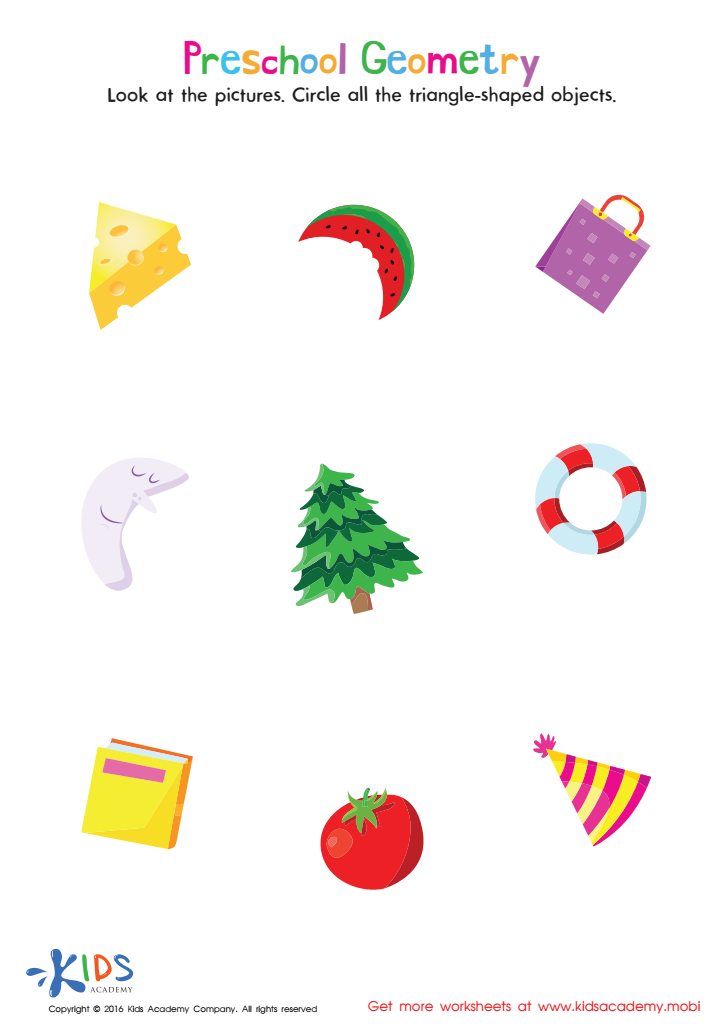






.jpg)
